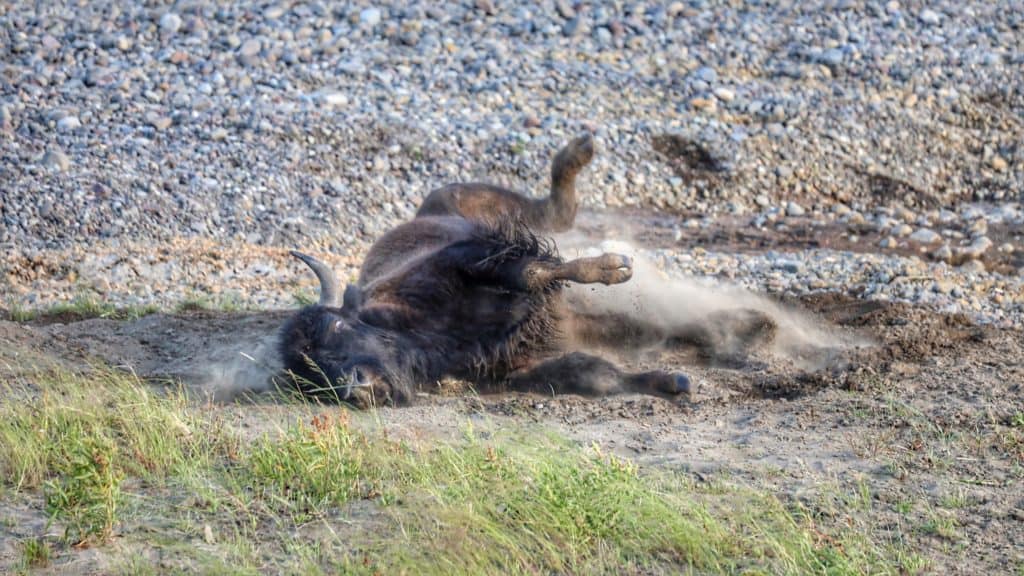Share this article
Successful translocations produce intended ecological results
Translocations have overwhelmingly produced the types of results that wildlife managers intended, according to a new review.
Whether it’s bighorn sheep (Ovis canadensis) being shifted back into montane ecological niches in the West, or wild turkeys (Meleagris gallopavo) being moved to various parts of the country, a number of reintroduced species have once again to parts of their historical range — sometimes bringing a number of ecological benefits to those ecosystems.
Previous research has found that many reintroduction projects ultimately fail at reaching their goal of putting a reproducing species back into the wild. But researchers wanted to see if the successful projects had any unintended ecological consequences. In a review of more than 1,000 species and subspecies that have been translocated over the past 125 years, researchers only found one case of an organism that caused biodiversity loss after being reintroduced.
Ben Novak, lead scientist of Revive & Restore, an organization with a mission “to enhance biodiversity through the genetic rescue of endangered and extinct species,” and his co-author examined case studies of species that were reintroduced into ranges where they had originally been extirpated or into areas where populations were declining or never existed in the first place across the United States.
One of Revive & Restore’s goals is to eventually bring back extinct species such as mammoths using genetic cloning technology. The organization was involved with the recent cloning of a black-footed ferret (Mustela nigripes).
In the review, published recently in Conservation Science and Practice, the researchers wanted to see whether they could find negative ecological side effects occurring with the translocation and reintroduction of species.

A bison wallows in Yellowstone National Park. Credit: Mark Gunn
The scientists looked at examples where species that were reintroduced for conservation reasons have persisted. They didn’t consider species that were introduced into new ecosystems or regions they were never found in for pest control or other reasons.
The researchers found that translocations played an important role in the recovery of about 30% of species or subspecies that had been delisted from the U.S. Endangered Species Act.
Of the many examples of species reintroduced for conservation reasons, there are a number that resulted in positive ecological changes. For example, bison (Bison bison) wallows create wetlands for arthropods, while wolves (Canis lupus) have had a number of impacts on plants and prey communities in Yellowstone National Park.
Others didn’t necessarily produce identifiable effects that were positive or negative, Novak said. Researchers examining the effect of tule elk (Cervus canadensis nannodes) reintroduction in parts of California on the plant community, for example, didn’t find their grazing had improved native plant diversity. But it didn’t have any deleterious impacts either, Novak said. Overall, cases that were otherwise neutral in secondary effects were taken as positive when it meant the addition of the formerly absent species.
Of the 1,014 taxa that were translocated for conservation purposes, the team only found one example of a species that had led to a loss in biodiversity — the endangered watercress darter (Etheostoma nuchale). In an effort to conserve the fish, managers moved it into waterways that weren’t part of its known past range. The introduced watercress darter ended up displacing the Tapawingo darter (E. parvipinne). The latter was thought to be more widely distributed before the action was taken, though later research proved it was unique to a smaller area. The introduced fish outcompeted the native fish in these springs.
“They ended up helping one endangered species to the detriment of another,” Novak said.
Novak said that opponents to reintroduction programs often point to these examples. But the reason behind these actions wasn’t usually for strictly conversation measures.
All of the other instances of translocations that led to negative consequences they could find involved the introduction of species for economic gain rather than for conservation. These included examples such as the introduction of non-native fish stocks to various lakes and waterways that later upset ecological balance, or the use of introduced species as biological control agents.
Even though the latter are responsible for an outsized proportion of the issues with introduced species, the researchers said that “only 1.4% (42) of 3,014 biological control agents released globally have caused ecosystem‐level deleterious impacts.” Most of the ones that caused problems were released before the 1980s when conservation-based regulations weren’t as strict as they are today.
Header Image: Wild turkeys have been translocated to many parts of their former range. Credit: fishhawk








